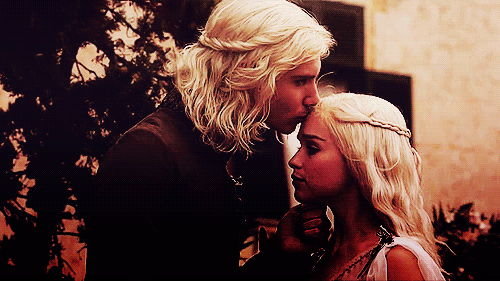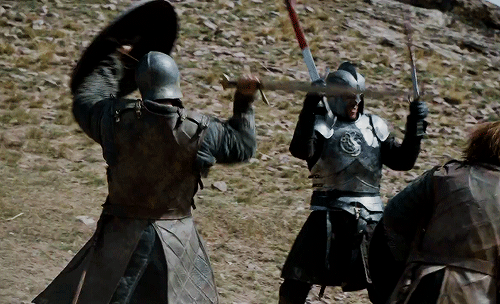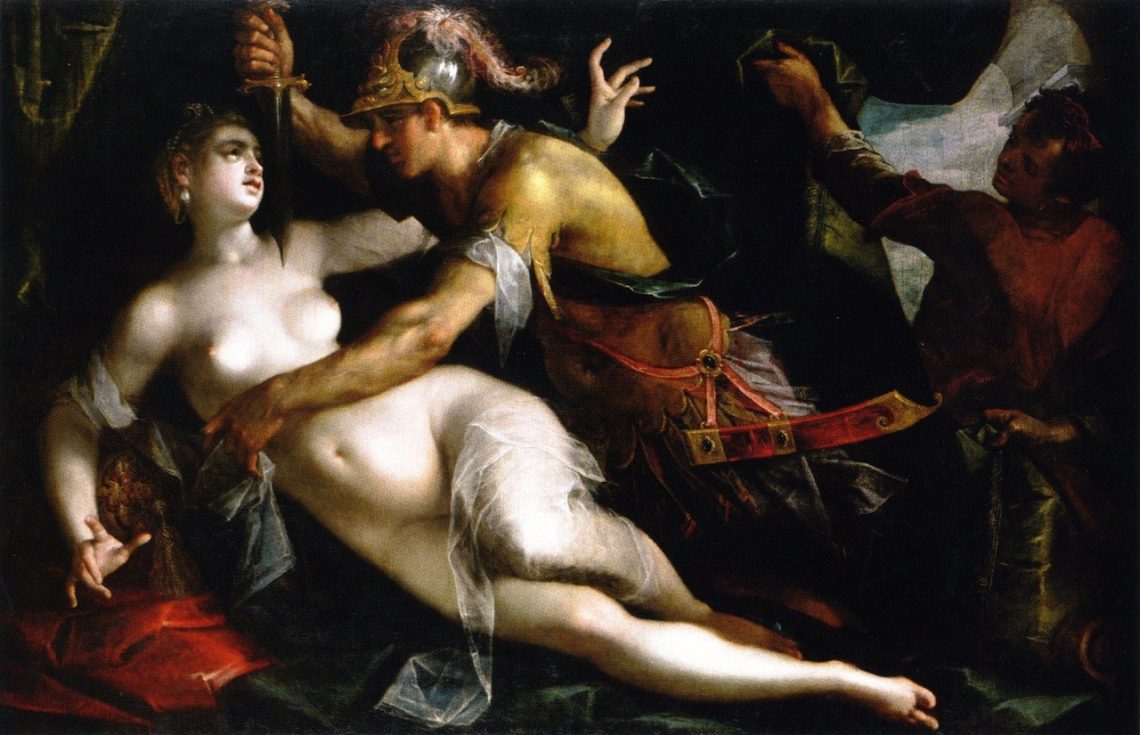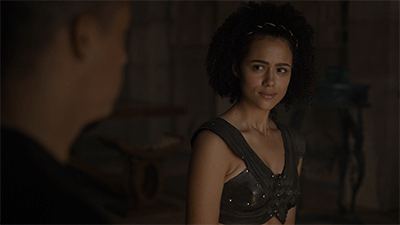Ok first of all, this is full of spoilers. If you’ve never watched Game of Thrones, stop reading and slap yourself. Then go watch Game of Thrones.
When I first began researching for this post I noticed that this topic has been hashed over quite a bit by European historians. American history is my area of expertise, so I was thankful for the abundance of articles to choose from when curating this list. Some of the following are pure speculation, while others are confirmed parallels between George RR Martin’s story and the real world. Because there are SO many parallels to draw, I’ve listed ten anecdotes here along with a list of links that go further into the historical aspects of Game of Thrones. I got lost going down the rabbit hole of history on one of those links so be careful.
1) The Incest of the Targaryens

When hearing about this Targaryen tradition, I instantly thought of the last line of pharaohs in Egypt. Each ruler was named Ptolemy, and each sister-wife was usually named Cleopatra or Bernice. Queen Cleopatra VII, who we famously just call Cleopatra, was one of these unfortunate women forced to wed her brother (though she later famously took the crown for herself).
2) Old Valyria = The Roman Empire
Both of these peninsula born empires grew to conquer and influence most of the world. Both fell, still leaving behind remnants of their former greatness (like Valyrian steel and Danerys Targaryen). The Roman Empire influenced politics and culture long after it fell, just like Valyria influenced politics and culture after the Doom.
3) The Red Wedding

George RR. Martin verified that the infamous Red Wedding was based on two real Scottish events.
The first was the Massacre of Glencoe. In 1691, all clans were required to swear allegiance to the new king by January 1st 1692. Unfortunately for the MacDonald Clan, thanks to a few `events out of their control, their signed allegiance letter showed up past the due date. The secretary of state rejected their allegiance and they became a target. A few weeks later 120 men under the crown arrived to the MacDonald stronghold, Glencoe, seeking shelter. It was customary for the MacDonalds to take them in, so they did. Two weeks later, under orders, the men murdered around 40 MacDonalds as they slept before setting things on fire. 40 more women and children ran out in to the bitter winter to die of exposure.
The second event was The Black Dinner. In 1440, the 10 year old king of Scotland greeted the 16 year old Earl of Douglass and his little brother for a lively night of food and entertainment. The brothers didn’t know it, but they had really been invited by the paranoid and conniving chancellor of Scotland. He thought that the Douglass clan was growing too powerful, so by the end of the dinner he had them dragged outside, placed on trial for high treason, found guilty, and beheaded.
However a third and less obvious comparison comes from the Kojiki, a text that detailed the somewhat mythological rise of Japan’s first ruler, Emperor Jimmu. He murdered all his rivals at a feast.
4) King Joffrey, The Jerk = Edward of Lancaster, The Jerk

Everybody rightfully loathes Joffrey. David Crow at Den of Geek compared him to Prince Edward of Lancaster, for a number of valid reasons. Edwards birth was probably the result of an affair between the queen and a lover. Both Edward and Joff have reputations for cruelty and were young in age while in power. A Milanese ambassador commented on Edward: “This boy, though only thirteen years of age, already talks of nothing but of cutting off heads and making war.” One example of Edward’s cruelty? While he was kidnapped and imprisoned by supporters of the Duke of York (his enemies), two of their knights watched over Henry to make sure the 7 year old boy didn’t get hurt. Despite staying true to their word, Edward later told his mother the queen to have their heads cut off. Both Joffrey and Edward died young; and neither consummated their shortly lived marriages. While this is likely Joffrey’s historical parallel because Prince Edward was a major component of the War of Roses (see #5), I also drew some connections between Joffrey and Caligula. Caligula was the extremely insane third emperor of the Roman empire. Like Joffrey he had a popular father and a mother often accused of being too meddlesome in politics. Both enjoyed provoking terror in others.
5) The War of 5 Kings = The War of Roses

A complicated, messy, and long war fought between two powerful houses for control of the throne. It sounds like Im describing The War of 5 Kings, but I’m actually describing The War of The Roses, a thirty year battle between House Lancaster and House York for the English throne. Some more similarities?
- A “handsome” man kicks a crazy king off of his throne
- A jealous uncle issues a decree that his nephews are illegitimate before seizing the throne for himself
- A king marries for love and offends someone, leading to his downfall
6) The Dorthraki = The Monghols
The nomadic and brutish Dorthraki are strikingly similar to the Mongols, who were also nomadic and known for stealing.
 7) The Knights Templar = The Nights Watch
7) The Knights Templar = The Nights Watch
The Knights Templar was a 12th-13th century military order that took lifelong vows of obedience and chastity. When they joined, they were absolved of their sins by a pope. Though they wore distinct uniforms like the Nights Watch, they were white and red. They were also led by “Grand Masters”, not “Grand Maesters”.
8) Hadrians Wall = The Wall
Hadrian’s wall was a large wall built in Northern Britain in 122AD to keep out barbarians. The wall in Game of Thrones is even built in roughly the same spot as Hadrian’s Wall, because the Westeros map bears a striking resemblance to the UK when Ireland is flipped upside down and attached to the bottom!

9) Henry Tudor = Daenerys Targaryen
 Henry Tudor, or Henry VII, lived across the “narrow sea” (aka the English Channel) for most of his life, dreaming about the day he would go back home and take the crown. Then he actually did it. Daenerys fans can only hope that our Mother of Dragons (and breaker of chains) will only succeed in doing the same. If you need a little more assurance, Henry VII used a dragon as his emblem. On History Behind Game of Thrones, Danielle Alesi makes a good case for why Daenerys is also wonderfully congruent to Henry’s granddaughter Elizabeth I, however.
Henry Tudor, or Henry VII, lived across the “narrow sea” (aka the English Channel) for most of his life, dreaming about the day he would go back home and take the crown. Then he actually did it. Daenerys fans can only hope that our Mother of Dragons (and breaker of chains) will only succeed in doing the same. If you need a little more assurance, Henry VII used a dragon as his emblem. On History Behind Game of Thrones, Danielle Alesi makes a good case for why Daenerys is also wonderfully congruent to Henry’s granddaughter Elizabeth I, however.
10) Lyanna Stark = Lucretia
Lyanna Stark reminds me of Lucretia, whose kidnapping and rape by the Etruscan prince led to the overthrowing of the Etruscan crown and the start of the Roman republic. When Lyanna was kidnapped by Rhaegar (or went off with him willingly, depending on who you believe), it created Roberts Rebellion and began the demise of the Targaryens. Below is a portrait, “The Rape of Lucretia”, by Hans von Aachen.

Hopefully this post did something for your Game of Thrones related hunger pangs. The show STILL doesn’t return to our screens until July 16th, but we will make it. Be sure to check out the references below.


